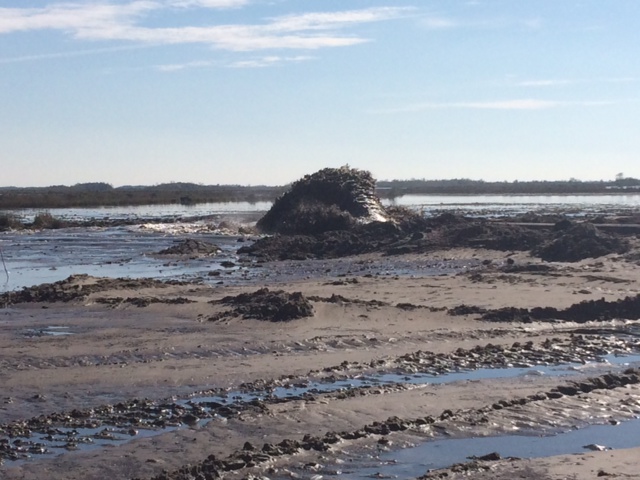Bayou Dupont marsh was built with dredged material from the Mississippi River. In 2009, the Bayou Dupont Project in the Barataria Basin became the first project to use riverine sediment for marsh creation. This pioneering project dredged approximately 2.6 million cubic yards of sandy material from the riverbed and delivered it five miles to the southeast via pipeline, creating more than 960 acres of intertidal marsh inside three areas defined by nearly 26,000 linear feet of earthen containment dikes. Bayou Dupont was funded with an 85% federal and 15% state cost share under the CWPPRA Program at a total cost of $104.4 million.
Part of Bayou Dupont was built using the long-distance sediment pipeline. This project reestablishes a stretch of emergent wetlands by using Mississippi River sediment and provides an adequate corridor that supports equipment mobilization for long-distance sediment conveyance while minimizing incremental and future environmental impacts. By using the pipeline, the Barataria land bridge can be restored and several marsh creation projects can be implemented. In fact, phase three of the above mentioned Bayou Dupont project utilized the Mississippi River long distance sediment pipeline. The project has created and nourished approximately 415 acres of marsh.
The $59+ million project is funded through Coastal Impact Assistance Program (CIAP) provided by the State, as well as Plaquemines, Jefferson and Lafourche Parishes.
In addition to marsh creation, more than 45 miles of barrier islands and berms have been constructed: Caillou Lake Headlands, Chenier Ronquille, Shell Island and North Breton Island. A total of $1.024 billion has been spent on barrier island and headland restoration projects, mainly from early-NRDA funding.

